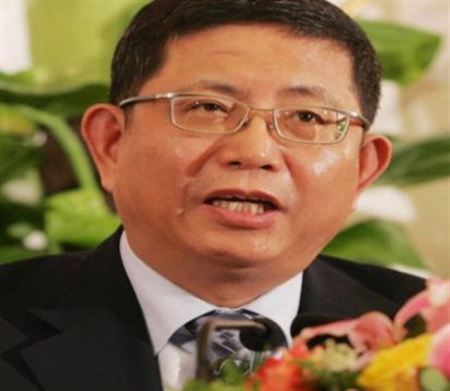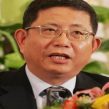
Local Debt Problems Highlight Weak Links in China’s Economic Model
Publication: China Brief Volume: 11 Issue: 13

The Chinese Communist Party (CCP) leadership’s apparent failure to rein in reckless borrowing by local administrations has raised serious questions about the efficacy of the country’s stimulus package—and the viability of its vaunted economic model. Last month, the National Audit Administration (NAA) disclosed that regional governments had run up debts totaling 10.72 trillion yuan ($1.65 trillion). Independent credit agencies have reckoned that the actual figure is around 14 trillion yuan ($2.15 trillion), or 35 percent of the country’s GDP (Bloomberg, July 5; Voice of America News, July 5). These horrendous debts show the party-state apparatus may be losing control over the regions’ finances. More significant is the fact that 33 years after Deng Xiaoping kicked off the era of reform, the country is still dependent on old-style state investments to boost GDP growth rates. The recent data points seem to indicate that efforts by the Hu Jintao-Wen Jiabao team to focus on consumer spending and technological innovation as new engines of growth—which is the leitmotif of the 12th Five Year Plan (12FYP) of 2011 to 2015—face formidable challenges ahead.
At a State Council meeting early this month, Premier Wen said Beijing would pull out the stops to curtail borrowing by local governments as well as so-called urban development investment vehicles (UDIVs) that enjoy official backing. “The size of local government debt being formed over the past several years is relatively big and some risks loom, as some regions and industries are weak in repaying the debt,” the official Xinhua News Agency quoted the State Council statement after the meeting as saying. “Local governments must continue to clean up and standardize the financing vehicles in a timely manner” (Reuters, July 5; Xinhua News Agency, July 5). Western economists have estimated that as a result of defaults and delayed repayments, Chinese banks’ non-performing loans (NPL) ratio may soar beyond 10 percent in a few years’ time (Reuters, June 28; Hong Kong Economic Journal, June 29).
A key reason why Beijing has been unable to whip regional cadres into line is that the “warlords” are in their own fashion following Beijing’s overall policy of relying on state-funded projects to foster economic expansion. Last year, fixed-assets investments accounted for an estimated 46.5 percent of GDP (Global Times, May 30; China.org.cn, April 6). In late 2008, Premier Wen unveiled a package worth 4 trillion yuan ($615 million)—some 50 percent of which would be bankrolled by local administrations—to sustain high-level growth in the face of the global financial crisis. The bulk of this gargantuan capital injection has gone into infrastructure projects as well as real-estate and related sectors. Given that the property market began to heat up soon thereafter, spending on housing construction and allied activities have gone into high gear since 2009. Regional officials are particularly keen on property-related areas because the sale of land and incomes such as property-transaction taxes make up at least half of local revenues. And it was not until last year—when the bubble had reached outsized proportions—that the State Council took serious measures to contain over-building and speculation (People’s Daily, June 7; China Daily, February 10).
While outlying the 12FYP earlier this year, Premier Wen said that in the interest of restructuring the economy, the State Council was lowering the annual growth rate to just seven percent. This has fallen on deaf ears in the provinces and major cities, many of which have loudly proclaimed plans to double their GDP during the five-year plan period (See “Beijing’s Blueprint for Tackling Mass Incidents and Social Management,” China Brief, March 25). According to Beijing University of Science and Technology economist Hu Xingdou, local cadres are convinced that faster-than-normal economic growth is a ticket to a quick promotion up the hierarchy. “They don’t mind incurring tonnes [sic] of debt because it’s the responsibility of their successors, if not the central government, to return the money,” said Professor Hu (VOA news, June 25; Huxingdou.com, July 1).
An even more potent incentive for officials to go after property-related businesses is private gains. Local “warlords” who have been given death or suspended death sentences this year due to illegal land- or property-related deals include the Mayor of Shenzhen Xu Zhongheng and the Vice-Mayor of Hangzhou Xu Wanyong (Sina.com, March 28; Xinhua News Agency, May 9; Guangzhou Daily, May 13). Central-level cadres have also gotten into the act, thus rendering Beijing’s efforts to douse overzealous investments in the localities even more difficult. Last month, Li Yuan, a former Vice-Minister of Land and Natural Resources, was kicked out of the CCP after he was subjected to investigation for reportedly taking bribes from developers and related transgressions. Other senior cadres who have been jailed for property-related corruption include the Vice-President of the Supreme People’s Court Huang Songyou (China News Service, June 10; Caijing.com, June 9; Xinhua News Agency, January 19, 2010).
Moreover, given the top priority that Beijing has given to maintaining stability, the warlords are telling the central leadership that a truncation of construction and related projects could have devastating socio-economic impact. As Nottingham University Sinologist Lina Song pointed out, “for poorer areas, a sharp reduction of local public investment would mean a reduction in employment and a rise in poverty” (New York Times, July 6). So far, the CCP authorities’ only strategy seems to be to play up the principle that cadres “must pass muster in both ability and morality, with priority given [to] morality” to be promoted (China News Service, June 23; People’s Daily, July 1). “Morality” is a long-standing code word for abiding by instructions from the central leadership.
While individual economists estimate that China’s total public debt is as high as 80 percent of GDP, it is unlikely that a massive default on regional loans—triggered for instance by the bursting of the housing bubble—will plunge the nation into recession. Most of the loans are issued by domestic institutions. Moreover, the government still has a big war chest. Central revenue was 8.3 trillion yuan ($1.28 trillion) last year. Also, the country holds $3 trillion in foreign-exchange reserves (The Economist, June 2; Wall Street Journal, June 9). Yet, as Xu Xiaonian, Professor of Finance at the China-Europe International Business School (CEIBS) pointed out, “Beijing is merely burning money to keep the capital projects going.” Comparing China to a patient, Professor Xu noted that “burning money and printing renminbi [yuan] can make him look good, but it doesn’t mean that his sickness can be cured” (Investide.cn [Beijing], July 3; Phoenix News [Beijing], June 22).
Equally significant is that the country’s excessive reliance on state outlays as a vehicle of growth means that the main goal of the 12FYP—encouraging domestic consumption and technological innovation—is being jeopardized. Consumer spending has remained tepid despite a series of state incentives such as repeatedly raising the minimal wage for urban workers. The average savings rate of urban households relative to their disposable incomes rose from 18 percent in 1995 to nearly 29 percent in the late 2000’s. The share of private consumption in GDP has fallen to about 35 percent, the lowest figure among large developed and emerging-market economies (Reuters, March 14; Brookings.edu, January 18). Chinese people still prefer to save given the inadequacy of medical insurance and old-age pensions. Equally important is the fact that in the past decade, while the income of the government and state-held corporations has increased dramatically, workers’ remuneration as a proportion of GDP has dropped by close to one percentage point annually. Last year, workers’ salaries were equivalent to a mere 25 percent of GDP, versus the world average of 55 percent (Xinhua News Agency, May 12, 2010; People’s Daily, May 12, 2010). This phenomenon of guofu minqiong (“the state getting richer while citizens remain poor”) will of course depress consumer spending.
Beijing’s developmental strategy of betting big on state injections has also hurt the country’s once-vibrant private sector. Much of the government funds that were used to fight the global financial crisis have ended up in state-controlled firms at both the central and local levels. Even before the on-going credit crunch, private firms could get, at most, one-third of the loans made available by state banks. Since the spring, even the most resilient private enterprises—for example, those in Wenzhou, Zhejiang, long known as China’s quasi-capitalist haven—have felt the pinch. Wenzhou officials have indicated that local firms have to pay some 60 percent interest rate to secure loans from underground financiers (The Age [Melbourne], May 4; China Daily, June 18). CEIBS’s Xu has deplored that as a result of the over-emphasis on state investments, “the government and state-owned enterprises have increased their dominance from steel to real estate.” “Thirty years of privatization have basically been brought to a halt,” he said (Caing.com, January 13).
The retreat of the private sector has cut into the country’s ability to enhance innovation in technology and management, which is a key objective of the 12th FYP. While the World Factory seems to be making headway with technological advancement, its high-tech advantages are similar to those of the Soviet Union and Russia: most of the exciting achievements the past decade have come from military or state-controlled laboratories and plants. State-of-the-art gadgets have included super-fast computers, high-speed trains as well as jetfighters and missiles (Global Times, June 11; Guangming Daily [Beijing] March 29). Global experience has demonstrated, however, that imaginative, user-friendly products for the consumer market usually come from private firms that are unencumbered by state fiats. The recent setback suffered by the non-state sector could bode ill for China’s overall innovation drive through the rest of the decade.
In his keynote speech marking the CCP’s 90th birthday, President Hu Jintao admitted that “problems of unbalance, lack of coordination, and unsustainability in development are outstanding,”—and that these structural impediments must be “resolved through deepening reform.” The supremo cited the magic word “reform” 44 times during his 14,000-character address (Xinhua News Agency, July 1; China News Service, July 2). The fact that Beijing has chosen to procrastinate rather than tackle urgent issues such as regional indebtedness, however, does not seem to augur well for the future of reform. According to Northwestern University Sinologist Victor Shih, who has written about irresponsible borrowings by local administrations since 2009, “The government had delayed acknowledging the problem for a long time.” “After three separate internal audits conducted by the Ministry of Finance, the China Banking Regulatory Commission and the People’s Bank of China last year, the State Council realized that the situation was serious,” he told China Brief. “Now, I still think the top leadership does not want to acknowledge the full scale of local debt.” Since a drastic cut-off of credits to localities would create voluminous bad debts, Professor Shih said, “Beijing’s solution is to muddle along for a couple more years.” The onus is on the Hu-Wen administration to show the world that it can come up with efficient and expeditious ways to grapple with the economy’s myriad bottlenecks.





